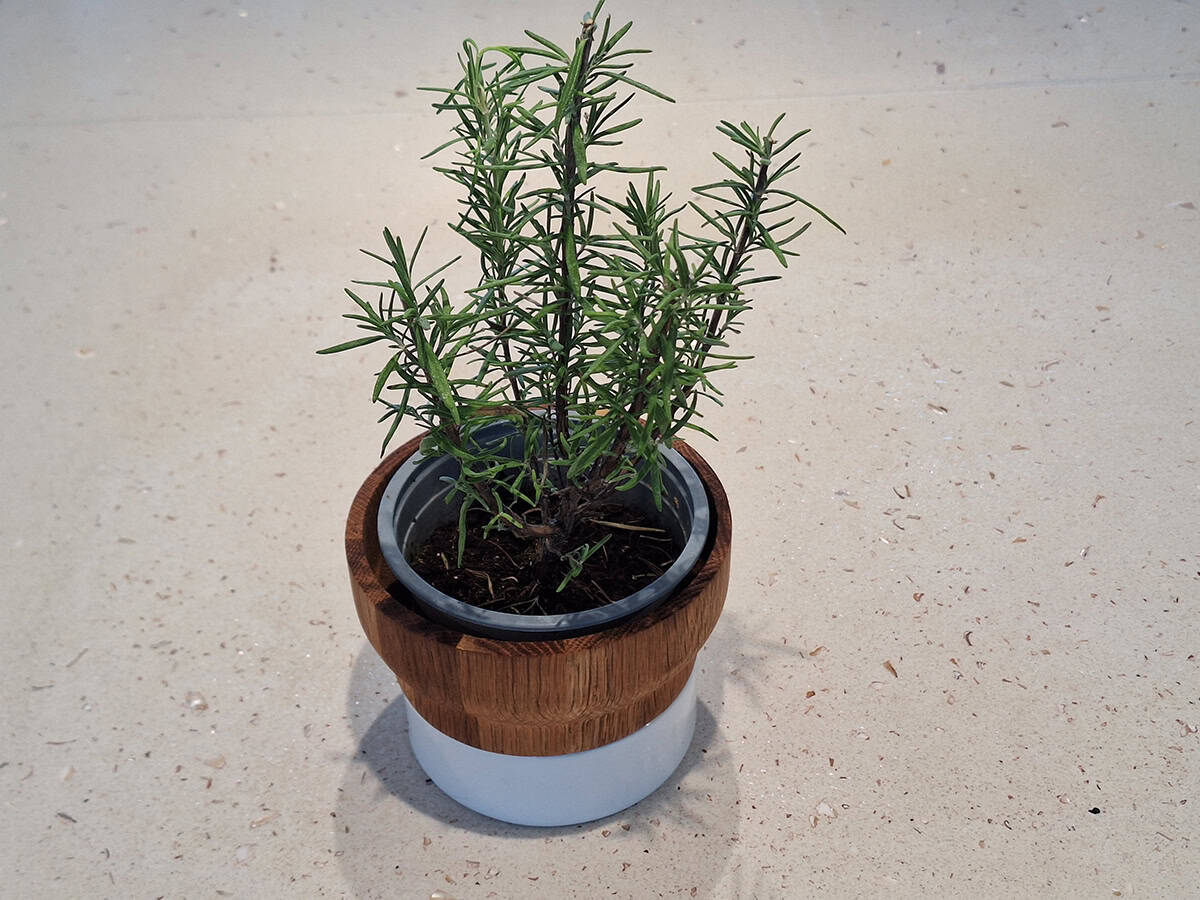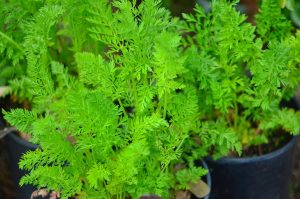Fresh rosemary adds flavor to meals and fragrance to your home. The best part? You don’t need a big garden to grow it. Keep reading to learn how to grow rosemary in containers.
Table of Contents
Choosing The Right Rosemary Variety
Picking the right kind of rosemary makes a difference, especially in containers. Compact or trailing varieties are generally easier to manage in pots.
Look for types like “Herb Cottage” or “Prostrate.” They’re naturally smaller and won’t take over your space. Less pruning, too, which is always a win.
For a taller look, “Blue Spires” or “Tuscan Blue” are solid options. They stand upright and aren’t as floppy, provided you give them enough sunlight and room to stretch.
It’s worth matching the variety to your climate and available space. Think about how much sun you get and whether the plant will live inside or out. Healthy nursery plants will give you a better start than trying to rescue a sad one.
Best Containers For Growing Rosemary
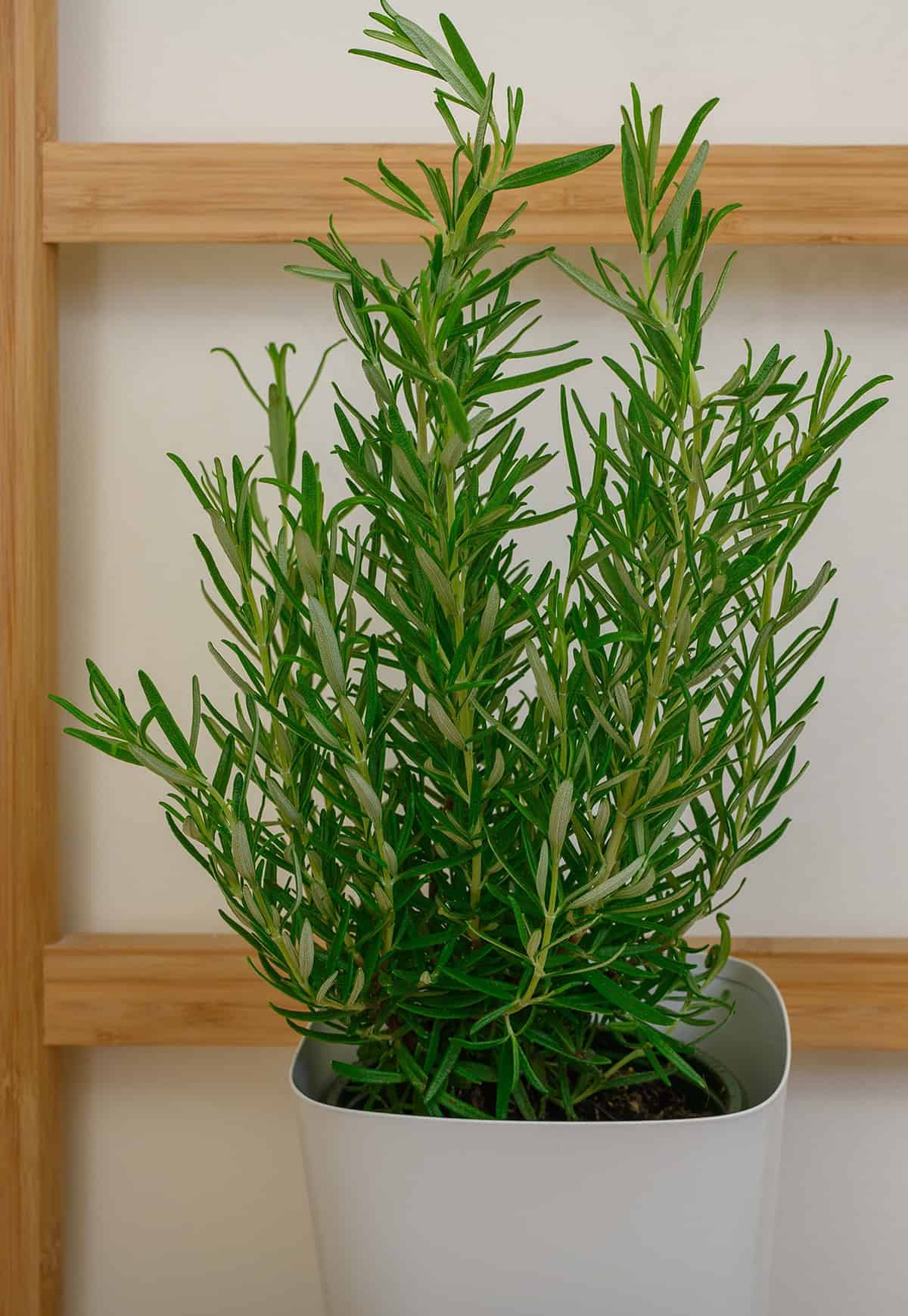
Drainage is non-negotiable; rosemary hates wet feet. Clay or terracotta pots work well since they let water out and help avoid root rot.
Plastic pots are lighter and hold moisture longer, which can be a plus in hot weather or if you sometimes forget to water. Still, a fast-draining potting mix is key—roots sitting in soggy soil will not end well.
Wooden planters? They’re fine as long as they’re untreated and have proper holes at the bottom. Skip the tiny pots—rosemary’s roots want room to breathe.
Go for something at least 12 inches across. That gives the plant stability and helps the soil hold moisture a bit longer between waterings.
A saucer helps catch drips, especially indoors. Elevating the pot with bricks or feet can help air circulate and keep water from pooling underneath. Just make sure the spot gets plenty of sun.
Soil And Drainage Requirements
Rosemary’s roots really need well-drained soil. Anything that stays soggy is a recipe for trouble. Potting mixes for herbs or cacti usually do the trick—they’re loose and don’t compact easily.
If the mix feels heavy, add some perlite, coarse sand, or small gravel. Garden soil alone is usually too dense for containers.
Don’t go overboard with nutrients. Rosemary likes things on the lean side—too much richness leads to floppy, weak growth. A touch of compost is fine, but skip the heavy fertilizers.
Double-check that your pot has drainage holes. Water should run out easily, not pool at the bottom.
Let the soil dry a bit before watering again. Rosemary can handle dryness much better than wet roots. If the top inch is dry, it’s probably time to water.
How To Plant Rosemary In A Pot
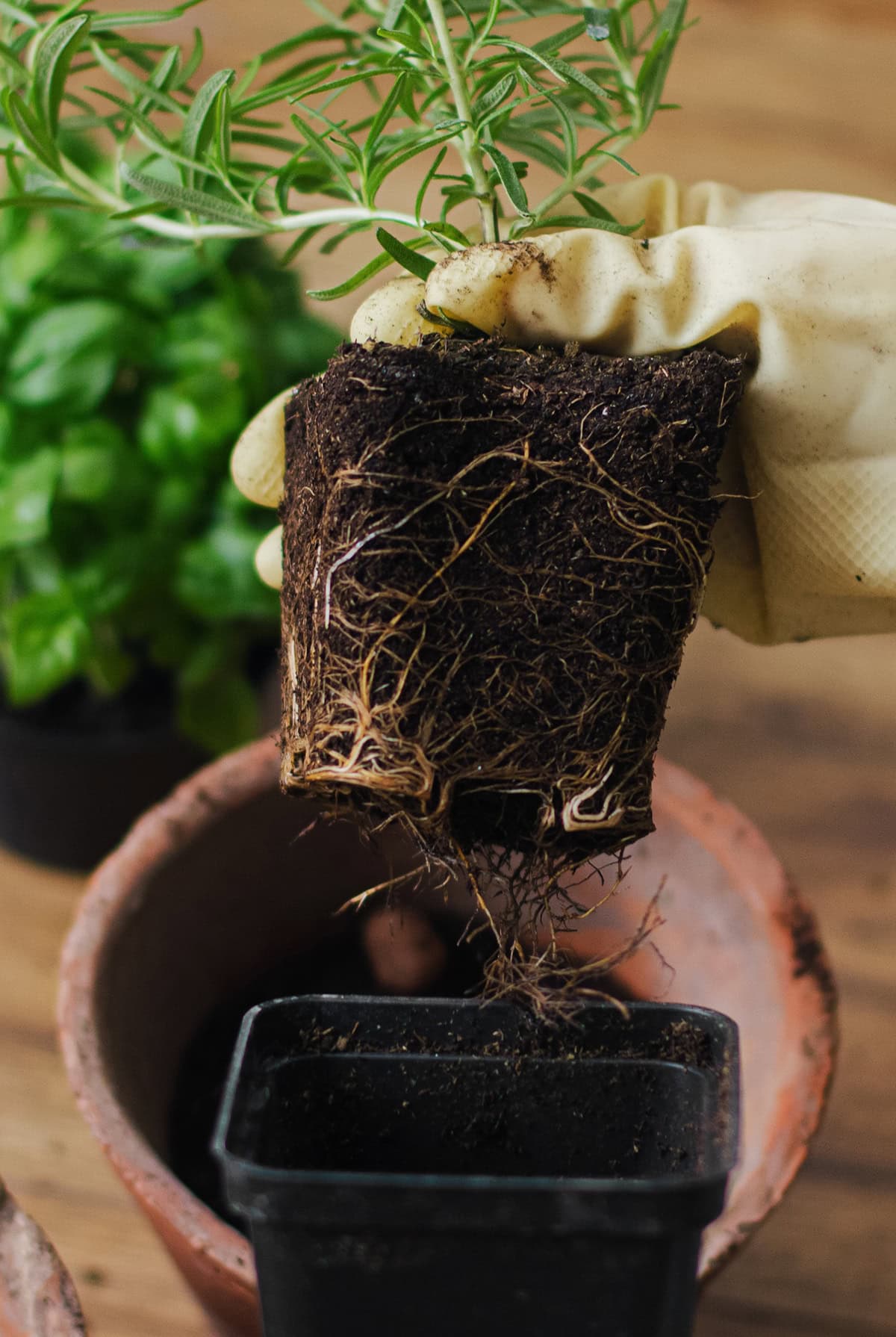
Start with a pot that drains well. Even a smaller pot, say 6 to 8 inches deep, is fine for a young plant.
Use a potting mix that drains quickly. If it seems heavy, toss in some sand or perlite.
It’s easiest to buy a small plant or take a cutting. Growing from seed is slow and can be frustrating for beginners.
Fill the pot partway with soil, set the plant in the center, and gently press soil around the roots. Don’t pack it down too tightly—you want air in there.
Water thoroughly so the whole root ball gets a drink, and let any extra water drain out. Keep the soil lightly moist, not soaked.
Find the sunniest spot you can. Indoors, a south-facing window is best. Outdoors, any spot with at least six hours of sun will work.
As your plant grows, you’ll likely need to move it up to a bigger pot. Giving the roots more space keeps the plant healthier and more productive.
Sunlight And Temperature Needs
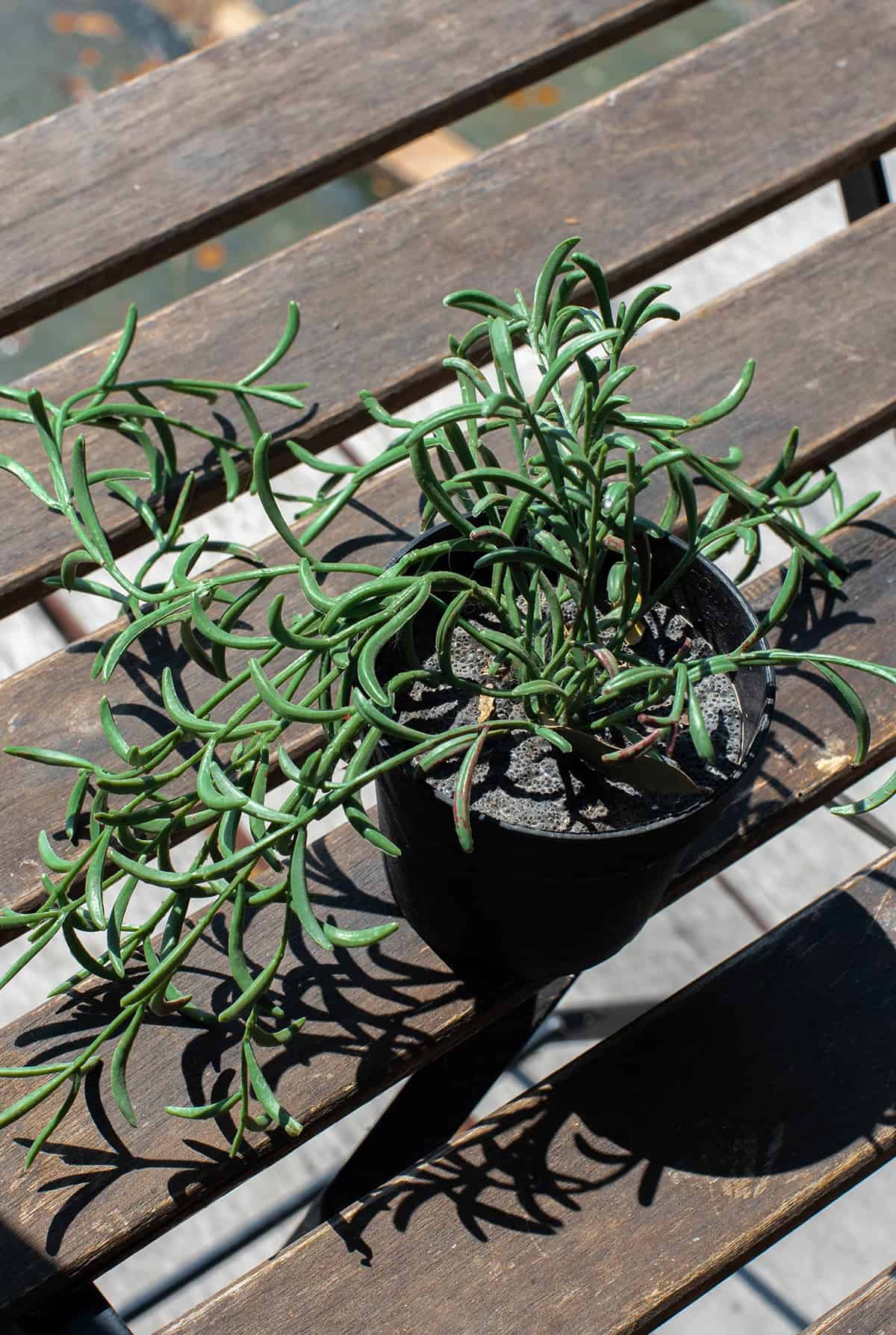
Rosemary is happiest with lots of sun. Aim for at least six hours of direct sunlight—south-facing windows or balconies are ideal.
Not enough light? The plant gets leggy and pale. Sometimes a grow light is the only fix if your space is gloomy.
Temperature-wise, rosemary likes it between 39°F (4°C) and 75°F (24°C). Cold drafts in winter are bad news, and a hard frost will kill it off, so bring pots inside before it gets that cold.
Keep it away from blasting heaters or radiators. Sudden swings in temperature aren’t great for rosemary. It does better with steady, moderate conditions.
High humidity isn’t its thing. Dry air and good airflow help keep disease away and the leaves looking good.
Watering And Fertilizing
Let the soil dry out a bit between waterings—overwatering is a much bigger problem than underwatering for rosemary.
When you do water, give it a good soak so the roots get what they need, but always let the excess drain off. If you notice yellowing leaves, it might be a sign to back off on the water.
Rosemary’s not a heavy feeder. If it’s looking sluggish or pale, a little all-purpose liquid fertilizer in early spring can help, but don’t overdo it.
Skip fertilizer on the leaves and don’t feed too often. Too much can burn the plant. Focus on getting the watering right first.
Average indoor humidity is enough. Just make sure the pot isn’t sitting in a puddle.
Pruning To Encourage Growth
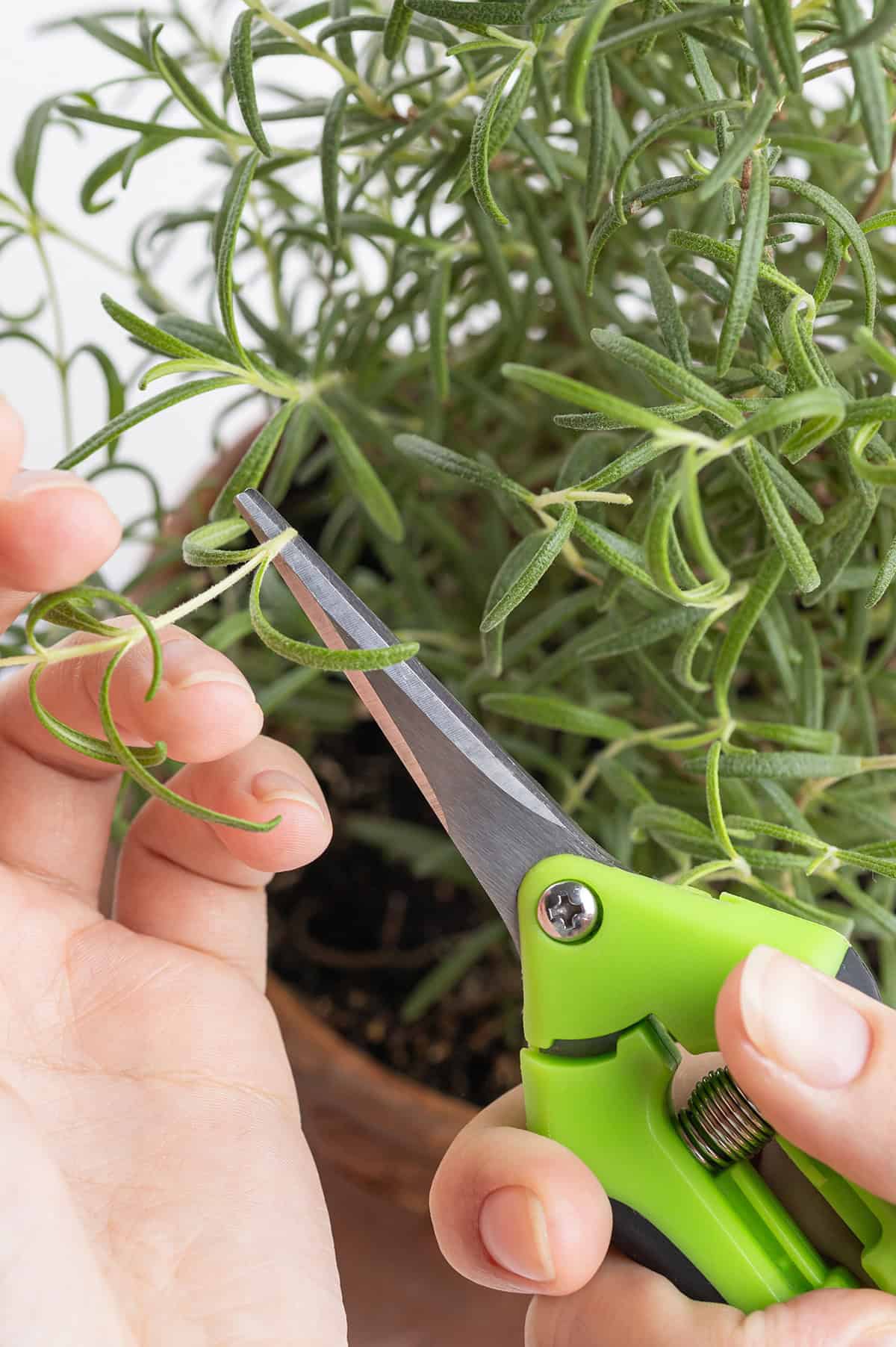
Regular pruning keeps rosemary bushy. Snip off the leafy tips with sharp scissors or pruners—this encourages new branches and denser growth.
Take off any dead or straggly stems as you go. Don’t go wild and remove more than about a third of the plant at once; too much can set it back.
Prune to shape the plant and keep it from getting spindly. Cutting back fast-growing stems helps it stay compact and tidy.
Best time to prune is after the main flush of flowers. That way, you get fresh growth for the rest of the season.
Sticking with light, regular pruning keeps rosemary looking good and stops it from turning into a woody mess. Skip the snips too long, and it gets sparse and tough.
Overwintering Potted Rosemary
Cold winters can be rough on potted rosemary. Most folks bring their plants inside before frost hits, which usually saves them from freezing.
Inside, put the pot near a south-facing window—rosemary still wants at least six hours of sun, even in winter. A cool room with some airflow is best.
Water just enough to keep the soil barely moist. Let it dry out a bit between waterings—overdoing it is a common winter mistake.
If the air indoors is bone dry, a light misting once a week or setting the pot on a humidity tray can help keep the needles from drying out.
Watch out for pests like spider mites and aphids. Check the leaves now and then; if you spot any, a gentle rinse under water usually does the trick.
In milder climates, some people leave rosemary outside. Mulch or straw around the pot can help insulate the roots, and tucking the pot somewhere out of the wind is smart.
Another trick: sink the pot into the ground and cover with soil or leaves to protect against deep freezes. Just remember to dig it up again when spring arrives.
Common Problems And Solutions
Rosemary in containers can run into trouble if it’s watered too often. This plant really doesn’t like wet feet—root rot kicks in fast, and you’ll see yellowing leaves as a warning sign. Letting the soil dry out before watering again is key.
Indoors, pests like spider mites, aphids, or mealybugs sometimes show up. Sticky spots or fine webs are usually the giveaway. A good rinse or a bit of insecticidal soap usually does the trick, though it might take a couple tries.
Pale leaves and slow growth? That’s usually a sign it’s hungry. A light dose of general-purpose fertilizer in spring can perk things up, but don’t get it on the foliage—leaf burn is no fun for anyone.
Powdery mildew is another headache, especially if the air’s stuffy. Cramming plants together just makes it worse. Thinning out branches and giving them space really helps keep things breezy and healthy.
Black spots or fuzzy mold on the leaves—yeah, that’s probably botrytis. Snip off anything affected and skip watering from above. Using clean pots and fresh soil goes a long way toward dodging these issues in the first place.
